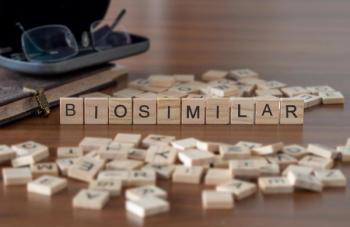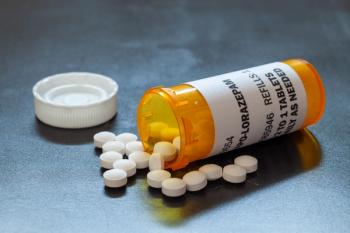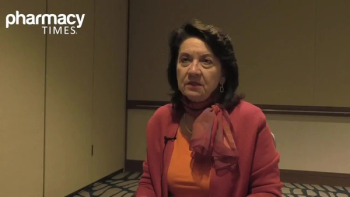
What's Up with Morning Blood Pressure?
The typical circadian variation in blood pressure (BP) for the majority of hypertensive patients follows a nadir occurring during the nighttime hours and a surge occurring during the early-morning period when individuals typically arise for the day. As seen in Figure 11, this is referred to as morning hypertension. Two types of morning hypertension exist. Patients who demonstrate persistently high BP from nighttime to morning are referred to as "nondippers," as their BP remains elevated nocturnally. The other type is morning surge hypertension (MSH), which is associated in part with the extreme dipping status of nocturnal BP. For these hypertensive patients, nighttime BP is >20% lower than daytime pressure. In healthy individuals, the morning BP surge is one of the components of diurnal BP variation and is associated with morning stress upon rising and normalizes within a few hours of awaking.2,3
Pathophysiology of Morning Surge Hypertension The morning pressure surge is thought to be related to the body?s circadian rhythm. During this time, increases in cortisol and activation of the renin-angiotensin-aldosterone system enhance coronary artery sensitivity to catecholamines (adrenaline and noradrenaline) and elevate systemic vascular resistance.4,5 Even in patients with well-controlled blood pressure, 50% still have morning hypertension.6 The morning pressure surge is seen between the hours of 6 AM and noon, as demonstrated in Figure 2. The risk of cardiovascular events in the morning may be due to an increase in platelet aggregation, he-matocrit, and fibrinogen levels, which create a thrombogenic environment.7 It is postulated that arterial thrombosis may be caused by he-modynamic forces from shear stress on arterial plaques, therefore leading to their rupture.8 Data from the Framingham Heart Study suggest that the risk of sudden cardiac death is 70% higher during the period between 7 AM and 9 AM, compared with other times of the day.9 Clinical Implication of Morning Surge Hypertension MSH is an independent risk factor for cardiovascular events.10 Patients with morning hypertension have an increase in left ventricular mass, prolonged QTc interval, and a longer QTc dispersion.11,12 Whereas the morning pressure surge is associated with stroke, persistently elevated BP increases the risk for damage to all target organs (brain, heart, and kidneys).1 One study found that, for every 10-mm-Hg increase in morning systolic BP, the risk of stroke respectively increased by 22%.7 Risk factors for the morning pressure surge include obesity, diabetes, alcohol consumption, tobacco use, and uncontrolled hypertension. Women and the elderly tend to be at higher risk.13 Interestingly, race is not a risk factor for high morning BP. In addition, morning hypertension is not correlated to the increased incidence of stroke in the Afri-can American population.14 In patients with type 2 diabetes, those with morning hypertension were found to have a higher incidence of nephropa-thy, retinopathy, coronary heart disease, and cardiovascular disease, compared with those without the morning pressure surge.15 Based on these data, control of MSH in this population is crucial to preventing microvascular and macrovascular complications.
Management of Morning Surge Hypertension
MSH may be attributed to a decrease in antihypertensive drug levels during the early hours before the morning dose. This "blind spot" in drug levels should be a target for therapeutic drug regimens.11 Therefore, antihypertensive medications with a long duration of action may be desired so as to provide adequate 24-hour therapeutic coverage. Inhibitors of the renin-angiotensin system and alpha/beta-adrenergic blockers may be preferred agents due to the pathophysiology of morning hypertension.7
The Pharmacist?s Role in Managing Morning Surge Hypertension
As pharmacists, it is important to not only identify patients at risk for MSH but also to suggest that they carefully monitor their BP at home. Since many different monitors are available, patients will rely on you to assist them with appropriate monitor selection. Omron has many models, all clinically proven accurate. The Omron automatic monitors include IntelliSense for proper, fast, and comfortable cuff inflation, memory capability, different cuff sizes, and an electronic display that includes the date and time. Selection based on proper cuff size is crucial. The cuff size is determined by the circumference of the biceps. If an incorrect cuff size is used, the BP reading will be inaccurate. This is why Omron developed the ComFit cuff, a pre-formed expandable cuff that fits both regular and large arms.
Home monitoring provides valuable information about morning BP, compared with screening in the physician?s office. Home readings are usually obtained in a controlled environment with good reproducibility. They also provide a better indication of end-organ damage and the effectiveness of drug regimens.11 The FDA has cleared the use of Omron Healthcare Blood Pressure Monitors for those with morning hypertension (models HEM-775, HEM-780, and HEM-790IT).
After appropriate monitor selection, be sure to reiterate proper technique with your patient:
- BP should be checked in the morning about an hour after waking up and in the evening before going to bed, using the same arm each time
- Avoid food, caffeine, or tobacco at least 30 minutes before measurement
- Sit in a chair with legs and ankles uncrossed and the back supported
- The arm should be level with the heart and rested on a table or counter
- Follow the user instructions included with the BP monitor
Do not forget that patients should be counseled on the importance of obtaining and recording their morning BP readings. Home BP logs should be brought to every health care provider appointment. In addition, high-risk patients should maintain a healthy diet, avoid tobacco and alcohol, and participate in regular physical activity in order to prevent cardiovascular events. Visit
Dr. Gibson is a pharmacy practice resident at University of Colorado (UC) Hospital. Dr. Page is an associate professor of clinical pharmacy and physical medicine and a clinical specialist, Division of Cardiology, UC Health Sciences Center, Schools of Pharmacy and Medicine.
References
1. Kario K. Time for focus on morning hypertension: pitfall of current antihypertensive medication. Am J Hypertens. 2005;18:149-151.
2. Kario K, Schwartz JE, Gerin W, Robayo N, Maceo E, Pickering TG. Psychological and physical stress-induced cardiovascular reactivity and diurnal blood pressure variation in women with different work shifts. Hypertens Res. 2002;25:543-551.
3. Muller JE, Tofler GH, Stone PH. Circadian variation and triggers of onset of acute cardiovascular disease. Circulation. 1989;79:733-743.
4. Kario K, Pickering TG, Hoshide S, et al. Morning blood pressure surge and hypertensive cerebrovascular disease: role of the alpha-adrenergic sympathetic nervous system. Am J Hypertens. 2004;17:668-675.
5. Naito Y, Tsujino T, Fujioka Y, Ohyanagi M, Iwasaki T. Augmented diurnal variations of the cardiac renin-angiotensin system in hypertensive rats. Hypertension. 2002;40:827-833.
6. Kario K. Clinician?s manual on early morning risk management of hypertension. Science Press. 2004:56.
7. Kario K, Shimada K, Pickering TG. Clinical implications of morning blood pressure surge in hypertension. J Cardiovasc Pharmacol. 2003;42(S1):S87-S91.
8. Shimada K, Kario K, Umeda Y, Hoshide S, Hoshide Y, Eguchi K. Early morning surge in blood pressure. Blood Press Monit. 2001;6(6):349-353.
9. Willich SN, Levy D, Rocco MB, Tofler GH, Stone PH, Muller JE. Circadian variation in the incidence of sudden cardiac death in the Framingham Heart Study population. Am J Cardiol. 1987;60:801-806.
10. Kario K, Pickering TG, Umeda Y, et al. Morning surge in blood pressure as a predictor of silent and clinical cerebrovascular disease in elderly hypertensives: a prospective study. Circulation. 2003;107:1401-1406.
11. Kuwajima I, Mitani K, Suzuki Y, Kuramoto K, Ozawa T. Cardiac implications of the morning surge in blood pressure in elderly hypertensive patients: relation to arising time. Am J Hypertens. 1995;8:29-33.
12. Marfella R, Gualdiero P, Siniscalchi M, et al. Morning blood pressure peak, QT intervals, and sympathetic activity in hypertensive patients. Hypertension. 2003;41:237-243.
13. Imai Y, Nishiyama A, Sekino M, et al. Characteristics of blood pressure measured at home in the morning and in the evening: the Ohasama study. J Hypertens. 1999;17(7):889-898.
14. Haas DC, Gerber LM, Shimbo D, Warren K, Pickering TG, Schwartz JE. A comparison of morning blood pressure surge in African Americans and whites. J Clin Hypertens. 2005;7(4):205-209.
15. Kamoi K, Miyakoshi M, Soda S, Kaneko S, Nakagawa O. Usefulness of home blood pressure measurement in the morning in type 2 diabetic patients. Diabetes Care. 2002;25:2218-2223.
Newsletter
Stay informed on drug updates, treatment guidelines, and pharmacy practice trends—subscribe to Pharmacy Times for weekly clinical insights.

















































































































































































































